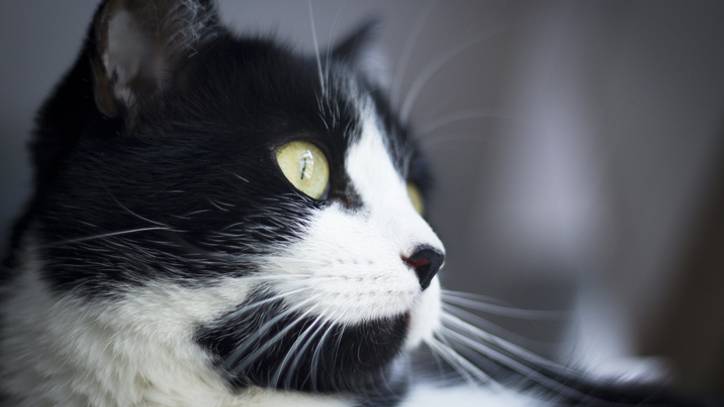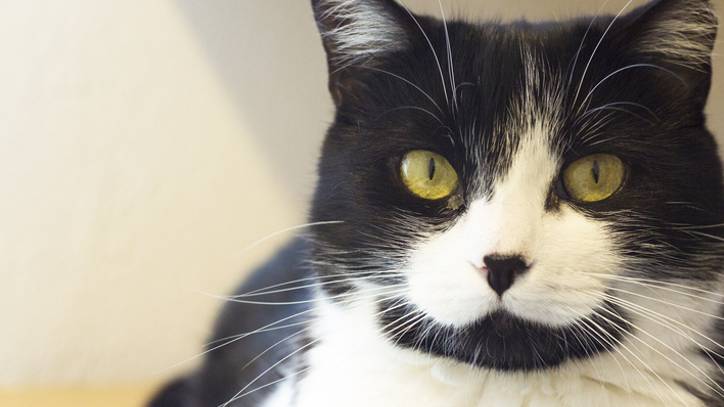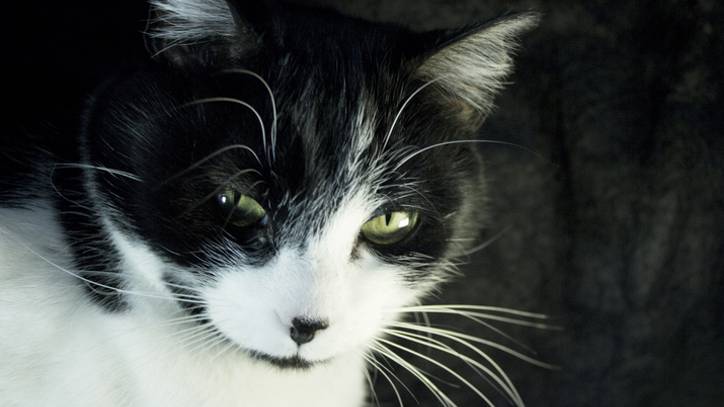Feline leukemia virus: Vet's guide to symptoms and treatment
Feline leukemia virus, or FeLV, is one of the most common infectious diseases seen in cats—keep reading to learn more

Feline leukemia virus, or FeLV, can cause a variety of health issues in cats. Kittens and cats from multi-cat households are predisposed to infection and the incubation time can be several months, so taking out pet insurance as soon as you get a cat is always a good idea.
Read on to learn more about FeLV, including what signs to look out for, what to do if your cat is diagnosed, and how to prevent infection.
- Stomatitis in cats: Vet’s guide to symptoms and treatment
- Ear infections in cats: Vet's guide to causes and treatment
What is feline leukemia virus?
Feline leukemia virus is one of the most common infectious diseases in cats. Studies have found that it is present in about 3% of cats in North America and around 2% of cats in Europe. Luckily, the prevalence of FeLV has dropped significantly in recent years due to the development of effective vaccines and the implementation of testing procedures.
Only some cats exposed to FeLV will go on to develop infection, and approximately 30% of exposed cats will have persistent infection. In general, the younger a cat is at the time of exposure, the more likely they are to develop a persistent infection and experience lifelong symptoms. Feline leukemia virus can also lie latent in the body and be reactivated in times of stress.
Feline leukemia virus generally invades immune cells and the bone marrow, subsequently causing cancers like lymphoma and leukemia, anemia, and immunosuppression, which leaves affected cats susceptible to infections.
Is feline leukemia virus contagious?
Yes—FeLV is contagious. It is most commonly transmitted via the saliva, usually through biting or grooming. The virus can also be excreted in the urine and feces, however, it does not survive for long in the environment, so this is a less common mode of transmission. Feline leukemia virus can also be passed down through breastmilk or during pregnancy.
Cats with the highest risk of becoming infected with FeLV include freely roaming outdoor cats, cats living with infected cats, and kittens of infected mothers. Kittens are more likely to develop infection and clinical disease following exposure to the virus, so it is recommended that female cats with confirmed or suspected FeLV are spayed to prevent transmission.
Get the best advice, tips and top tech for your beloved Pets

Symptoms of feline leukemia virus
Symptoms of FeLV infection can range in severity, and they may not always be present. They can also overlap with those of other diseases and include:
- Loss of appetite
- Lethargy
- Weight loss
- Persistent fever
- Unkempt coat
- Enlarged lymph nodes
- Behavioral changes
- Pale mucous membranes, including the gums
- Inflammation of the gums or mouth
- Persistent diarrhea
- Infections, such as those of the skin, respiratory tract, or bladder
- Eye conditions
- Seizures
In cats who develop persistent infection, symptoms can progressively deteriorate over weeks, months, or years.
Diagnosis of feline leukemia virus
Feline leukemia virus can be diagnosed or ruled out with a blood test. Depending on the results, your vet may wish to repeat the test in a few months or send another blood sample away to the lab to confirm the diagnosis.
Because of the range of diseases that can be associated with FeLV infection, all sick cats should ideally be tested for FeLV. In addition, the American Association of Feline Practitioners (AAFP) recommends that all cats are screened for FeLV before being adopted or after exposure.
Treatment of feline leukemia virus
Unfortunately, no specific treatments have been proven to be effective against FeLV. Treatment is supportive in nature to address FeLV-related disease.
This includes antibiotics for bacterial infections, blood transfusions for anemia, and chemotherapy for lymphoma. Cats with FeLV often have a harder time clearing infections than healthy cats, so treatment may be required for longer periods of time.

How to care for a cat with feline leukemia virus
Cats with FeLV should be examined by their vet every 6 months, and all FeLV-related diseases should be treated promptly and aggressively.
Infected cats should also be kept up to date with core vaccinations and regular flea and worm preventative treatments to keep them as healthy as possible. All cats with FeLV should be spayed or neutered, especially female cats who may pass the virus onto their offspring or be prone to miscarriage.
Cats diagnosed with FeLV should ideally be kept indoors to prevent the spread of infection to other cats and to keep them safe from other infectious diseases. In addition, it is best to avoid introducing new cats into the household if possible, both to keep the new cat safe and to prevent undue stress on your cat.
When to euthanize a cat with feline leukemia virus
Although FeLV is often fatal, killing approximately 85% of cats with persistent infection within 3 years of diagnosis, infected cats can have a good quality of life for several years before they deteriorate.
When a cat’s quality of life becomes compromised and they have more bad days than good days, it may be time to say goodbye. Your veterinarian can help you determine when the right time is, so staying in close contact with them is of utmost importance.
How to stop your cat from getting feline leukemia virus
Because of the potentially poor prognosis of FeLV infection, it is best to prevent exposure to the virus in the first place. This can be done by keeping cats indoors or only allowing them outside under your supervision.
In households with several cats, testing and quarantining protocols should be considered for new cats. Negative and positive cats should be housed separately, and food bowls and litter trays should be cleaned regularly.
An FeLV vaccine is available that, while not 100% effective, can help prevent the development of infection upon exposure to the virus. The AAFP recommends that all cats receive an initial course of the vaccine as kittens and a booster 1 year later.
After this point, cats should be considered on an individual basis, with cats at risk of exposure continuing to be vaccinated throughout their lifetime. Your vet can answer any questions you have regarding the FeLV vaccine and how often your cat should get it.
Dr. Diana Hasler graduated with distinction from the University of Edinburgh Royal (Dick) School of Veterinary Studies in 2018. She has experience working as a small animal veterinarian in general practice, where she has treated many dogs, cats, rabbits, and rodents. She has also recently branched out into the field of medical communications, doing freelance work as a medical editor and writer. Dr. Hasler has been Postdoctoral Research Fellow at Michigan Medicine since 2023, where she is a Laboratory Animal Medicine Resident.

